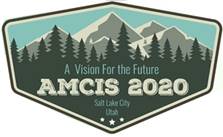Loading...
Paper Type
ERF
Abstract
According to the World Health Organization, approximately 1.35 million people died as a result of road traffic accidents every year. Timely assistance and rescue from first responders play a critical role in such accidents. In the meantime, unmanned aerial vehicles (UAVs), or drones, have been proposed an assistive technology ranging from helping with indoor errands to serving as outdoor assistants for surveillance, delivery, and companionship. This paper aims at understanding the opportunities and concerns of using drones to assist first responders in traffic accidents. We conducted semi-structured interviews with 20 participants who are regular commuters and drivers. We found that drones are promising in providing accessibility to first responders in tight situations, timeliness of alerting emergency services, and real-time traffic management information. The benefits would allow for a quick basic medical response until services arrive, have a means for two-way communication between motorists and responders, and be able to deliver aid in remote areas.
Recommended Citation
Gupta, Sambhav; Chen, Yu; Zhang, Yanxia; and Sessions, Richard, "Artificially Intelligent (AI) Drones for First Responders" (2020). AMCIS 2020 Proceedings. 16.
https://aisel.aisnet.org/amcis2020/ai_semantic_for_intelligent_info_systems/ai_semantic_for_intelligent_info_systems/16
Artificially Intelligent (AI) Drones for First Responders
According to the World Health Organization, approximately 1.35 million people died as a result of road traffic accidents every year. Timely assistance and rescue from first responders play a critical role in such accidents. In the meantime, unmanned aerial vehicles (UAVs), or drones, have been proposed an assistive technology ranging from helping with indoor errands to serving as outdoor assistants for surveillance, delivery, and companionship. This paper aims at understanding the opportunities and concerns of using drones to assist first responders in traffic accidents. We conducted semi-structured interviews with 20 participants who are regular commuters and drivers. We found that drones are promising in providing accessibility to first responders in tight situations, timeliness of alerting emergency services, and real-time traffic management information. The benefits would allow for a quick basic medical response until services arrive, have a means for two-way communication between motorists and responders, and be able to deliver aid in remote areas.
When commenting on articles, please be friendly, welcoming, respectful and abide by the AIS eLibrary Discussion Thread Code of Conduct posted here.


